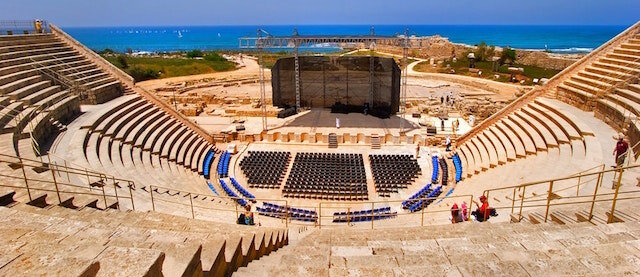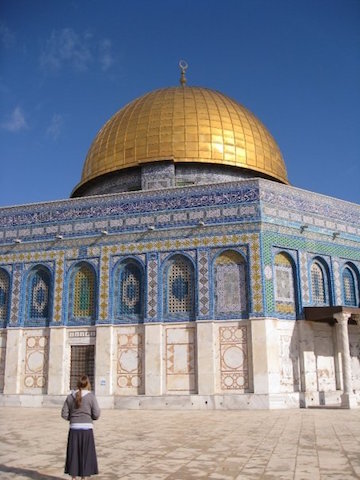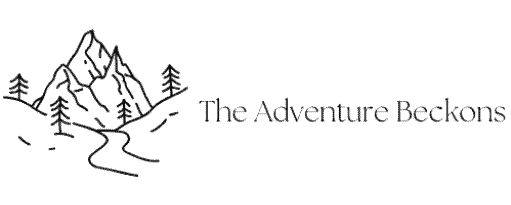Israel Itinerary
Thinking about a trip to the Middle East? Then look no further than the modern, hip, sophisticated country of Israel. Situated along the beautiful Mediterranean sea and bordered by Egypt, Jordan, Syria, and Lebanon, Israel is a tiny slice of heaven in the arid Middle East.
I lived in Israel for over a year and have visited on a number of other occasions. In this post, I outline:
- Why go?
- A map of all sites listed
- The different regions of the country to choose from for adventuring, with a focus on my favorites as well as ‘must-see’ spots
- Things to know before you go
- Information about getting around
- Must eat foods
Why go to Israel?
- Israel is one of the more accessible Middle Eastern countries to visit for foreigners. The economy and government are relatively stable and despite flare ups over the years of violence, the government and military run an incredibly tight ship around security, so you will never feel more safe!
- The diverse climate has something for everyone. From the mountains of the Golan Heights, to the shimmering beaches along the coast, to the vast craters and desert in the Negev, you can have a bit of everything and enjoy a number of activities year round.
- Cradle of religion! Israel is an archeological paradise. Almost nowhere on earth can you see such a rich display of archeological wonders and evidence of the important civilizations and religions that have conquered this land for the last couple thousand of years (think the Romans, Greeks, Ottomans, British, oh my!).
- Home to wonders of the world. In few countries can you visit so many important sites of historic, religious, or natural phenomenon. You can walk in Jesus’s steps, visit where the ancient temple in Jerusalem once stood, float in the dead sea (the lowest place on earth!), stare into the abyss of the largest erosion crater, and visit one of only ten Baha’i temples on the planet.
Map of Israel
Or click on this map if the above does not generate in your browser.
Best sites in Northern Israel
Banias (Hermon Stream Nature Reserve) and the Golan Heights
Banias offers a natural cool-springs pool for swimming as well as one of Israel’s largest waterfalls and great hiking. In the Golan Heights area beyond, you can check out amazing wineries like Yarden or Golan Heights Wines. This area is best explored on an organized tour or by renting a car.

Zikhron Yaakov
This quaint town is the kind of place you just fall in love with, and I certainly did! With views of the valley below, a quaint old-town feel downtown, art galleries, and some world famous wineries like Carmel Winery, you really can’t go wrong. This is a great place to plant yourself for a night or two when exploring the Northern region.
Caesarea
This roman city built by Herod the Great before the common era is beautifully situated along the mediterranean sea and has roman ruins to explore, most specifically the Roman Theater. Revived since the time of the Romans, this outdoor amphitheater hosts concerts to this day. Check out tickets here.

Sfat (Safed ot Tzfat)
Sfat is often thought to be the home of Kabbalah, a mystical sect of Judaism. It is certainly a mystical place, a city high in the mountains with cooler temperatures than most of the rest of the country. Sfat offers incredible views everywhere you look of the valleys and mountains surrounding it, but it helps to be physically fit when visiting this city as you have to climb many stone stairs to get around! Because of it’s mystical history and designation as one of the four holy cities of Judaism, it attracts many artists.

Other highlights in Northern Israel
The Baha’i Gardens of Haifa
These manicured gardens which surround the Shrine of the Bab are open to the public though best enjoyed on a guided tour, available for free at select times. There are only 10 Baha’i temples on earth and this one has an incredible view.

Akko (Acre)
This sea-side port is interesting for many reasons, but particularly for the preservation of the Ottoman walled old city, built on top of Crusader archeology. For some Ottoman history, you can check out the Underground Prisoner’s Museum to learn more about different conquests of the region. Akko is also a UNESCO world heritage site and has an amazing Turkish style bazaar with special sweets and spices.

Rosh Ha’Nikra
These magically-blue water grottos sit at the tippety top of Israel’s northwest corner, straddling the border with Lebanon. After taking a scenic Gondola ride down to the caves, you can walk around and enjoy the tide and the water splashing up into the caves.

Best sites in Jerusalem
Machane Yehuda
This somewhat open air market is best enjoyed on a Friday before the coming of the Sabbath, when everyone is out and about gathering food for the holiday. Some highlights include Marzipan Rugelach (the best in all of Israel!), dates, olives, fresh breads, and tons of pre-prepared dishes like shnitzel, Israeli salads, and more. At night, this area has recently turned into a popular bar scene.



Arab Souk
This maze of alleys tucked on the Northwest side of the Old City of Jerusalem (bordering the Jewish and Arab quarters) is arguably the busiest and most interesting corner of the Old City. Here you can buy incredible spices, dried fruits, and knick knacks from all three of the city’s monotheistic religions.

The Western Wall
Considered the holiest of places to worship for the Jewish people, this historic spot is buzzing with prayer at all hours of day and night. The wall itself represents a foundational wall of the historic temple of Jerusalem, which was destroyed by the Romans who conquered the area in 70 C.E. Traditionally, visitors write wishes or prayers to God on small pieces of paper and stick them in the cracks of the wall. Modest clothing required (cover up to knees, no tank tops, head covering for men).

Other major highlights in Jerusalem
The Dome of the Rock
The top part of the former-temple complex (referred to by many as the ‘Temple Mount’) is now run by the Jerusalem Islamic Waqf. Built in the 7th century, it is one of the most import shrines in Islam (but has significance for many religions) as beneath the Dome lies the Foundation Stone, said to represent the spot where Isaac was almost sacrificed and Adam created. While non-Muslims cannot enter the Al-Aksa Mosque or the Dome of the Rock, most foreign tourists can walk around the Temple Mount grounds in off-prayer hours (please note, prayers go on five times daily, check hours and holiday schedules before trying to visit).

Israel Museum
Home to a number of interesting artifacts like the Dead Sea Scrolls (housed in the beautiful Shrine of the Book), ancient Judaica, and even mummies (!), this museum helps summarize much of the archeological and chronological history of the country. This is a good place to start if you need to brush up on your history and don’t have a tour guide. There is a cost to enter, tickets and more information can be found online.

Church of the Holy Sepulcre
This church is where it is thought that Jesus was crucified as well as his empty tomb discovered. You have to navigate the back alleys of the Muslim quarter of the Old City to reach the church (in the Christian quarter), which can be a fun way to get lost, explore, and enjoy some local delicacies. Constantine the Great set out to build this church in the 4th century.
Can’t miss sites in Tel Aviv
Nachalat Binyamin Craft Market
This artisan street market has some of the best Judaica and other crafts in all of Israel. Of note, the market is only open on Tuesdays and Fridays!
Neve Tzedek Neighborhood
The first official neighborhood in Tel Aviv, this spot is home to colonial style homes and cobblestone streets. Great for wandering, there are some amazing art galleries and craft shops to stumble into. One of my favorites at the moment is Talale’s wooden crafts.

Old Town Yaffo (Jaffa)
This city on the Southern tip of contemporary Tel Aviv is home to an ancient port. The area today is having a hipster, artistic revival and has interesting graffiti, art galleries and posh restaurants, including some of the best Turkish coffee and Hummus in Israel (Abu Hassan).

Other major Tel Aviv highlights
Independence Hall (Dizengoff House)
If you are a history buff, you might enjoy this spot where Ben Gurion, Israel’s first prime minister, helped announce the beginning of the State of Israel.
The Promenade
This beautifully maintained biking and walking path along the entire Tel Aviv waterfront is also where you can find bars and restaurants that bring drinks and food to your beach lounger by the sparkling mediterranean sea.

The South (‘Negev Region’) Can’t Miss Sites
Makhtesh Ramon
This enormous crater is Israel’s version of the Grand Canyon. You can hike in many parts of the crater area though most people start in the town of Mitzpe Ramon. Keep your eyes peeled for wild Nubian Ibex, a species of goat native to Israel!

Ein Gedi
This beautiful desert oasis and nature reserve close by to the Dead Sea has both natural wonders to enjoy as well as historical significance. The dead sea scrolls, which are some of the oldest artifacts found in ancient Israel, were found near here. These days, you can hike and enjoy the natural pools and waterfalls (check out some recommended hikes here).

Southern Israel major highlights
The Dead Sea
One of the major tourist highlights, visiting the Dead Sea allows you to float weightless in water because of how high the salt content is! There is also often nutrient-rich mud available to coat all over your body. Many claim that the sea and the salt have healing characteristics, and there are a number of nice hotels and resorts along the Sea that capitalize on this concert. Do note to not go in if you have any open wounds, and avoid getting the water in your eyes or in any open orifices, as it can be quite painful!

Yotvata Kibbutz
This kibbutz (an Israeli collective settlement) which primarily functions as a dairy farm is the first Kibbutz built in this part of Israel in 1957. Here they make incredible ice cream and chocolate milk products. Make sure to stop here if you venture as far south as Eilat!
Getting Around Israel
Renting a car
Car rental and driving in Israel is actually pretty seamless. The highways are excellent, and the only thing to look out for is aggressive drivers and traffic in the city (but what else is new?). Car rentals might look cheap online, but they usually tack on some extra taxes at the end. Also, gas is not particularly cheap so you might want to factor that in to your calculations. Israelis drive on the right side of the road and an international driver’s license is not required. Renting a car is a great way to get around if you are trying to get to some off-the-beaten hikes or are planning on traveling from North to South and want to have some flexibility. Also, if you are interested in traveling on the Sabbath or Jewish Holidays, this is a good option because otherwise most public transport shuts down on Friday early afternoon and doesn’t resume until Saturday night.
Trains
There are many great train options that can get you up and down the coast and about as far south as Be’er Sheva. There is also a brand new train from Tel Aviv airport directly to Jerusalem!
Buses
This is the primary way most locals get around the country, and it is also quite simple for tourists as well. English is widely spoken so you should have no problem getting help with directions and confirming your bus. Tickets can be bought on the bus or in terminals and run frequently all over the country. There are two main bus companies, Egged and Dan.
Things to know before you go to Israel
- In Israel, the weekends are Friday afternoon to Saturday night, in accordance with the Jewish Sabbath which begins at sundown Friday nights and ends after dark on Saturday nights. As a result, public transportation and many shops and restaurants close during this time.
- Many restaurants in Israel serve kosher food, which means that they will only serve dairy food or meat food, but not both.
- Haggling with cab drivers and in markets is encouraged.
- Hebrew is the official language of Israel, with Arabic the unofficial language. Most Israelis learn English in school and you will see almost all signs in Hebrew, Arabic, and English lettering.
Food You can’t miss in Israel:
- Hummus (best with spiced ground beef)
- Falafel (fried chickpeas)
- Shwarma (best enjoyed in fluffy Laffa bread, a type of roasted meat on a spit either lamb or turkey)
- Burekas (philo-dough pockets)
- Shakshuka (tomatoes simmered with egg, typical breakfast dish)
- Rugelach (dessert made with dough and stuffed with chocolate or fruit preserve)
- Sahlab (a Middle Eastern milk-pudding drink, often topped with Pistachios)
- Turkish Coffee (strong, unfiltered, finely ground coffee)
- Pita with Zaatar (bread pockets with Zaatar seasoning, a middle eastern herb)











Awesome post. Israel looks like it has it all!
It definitely does, thanks for reading!